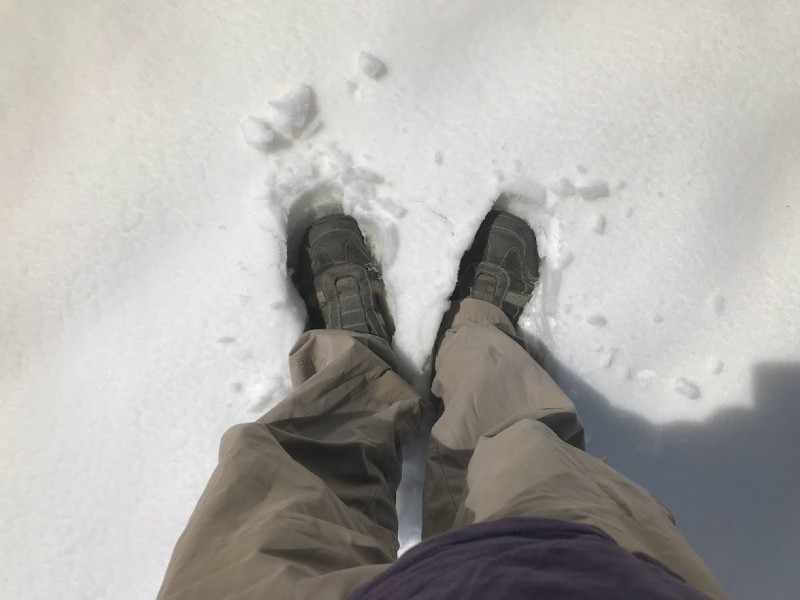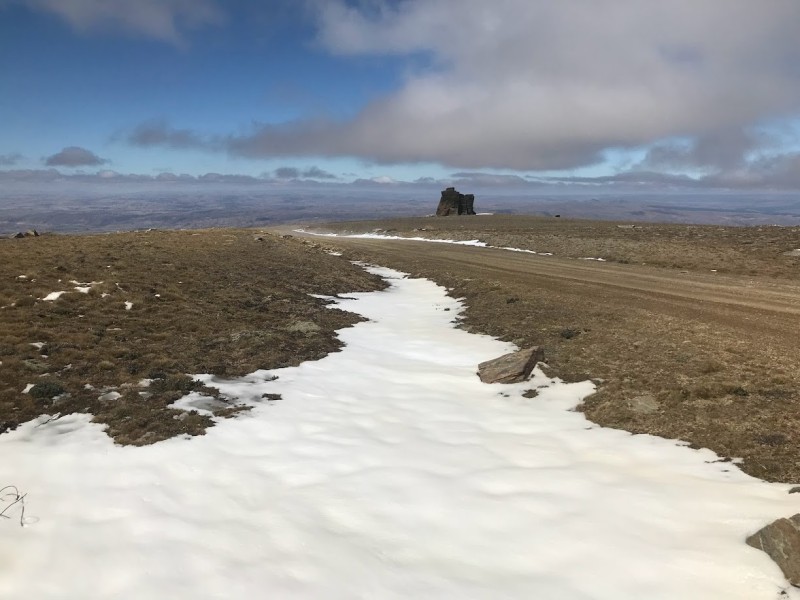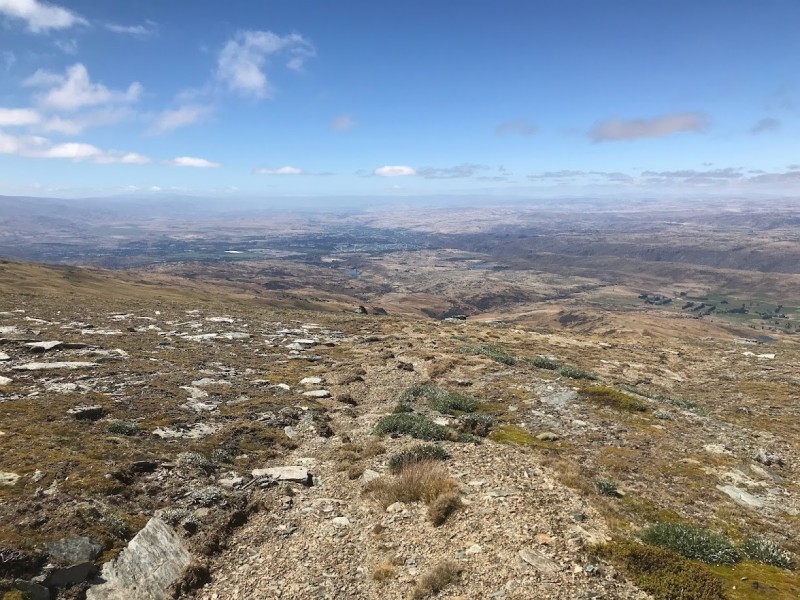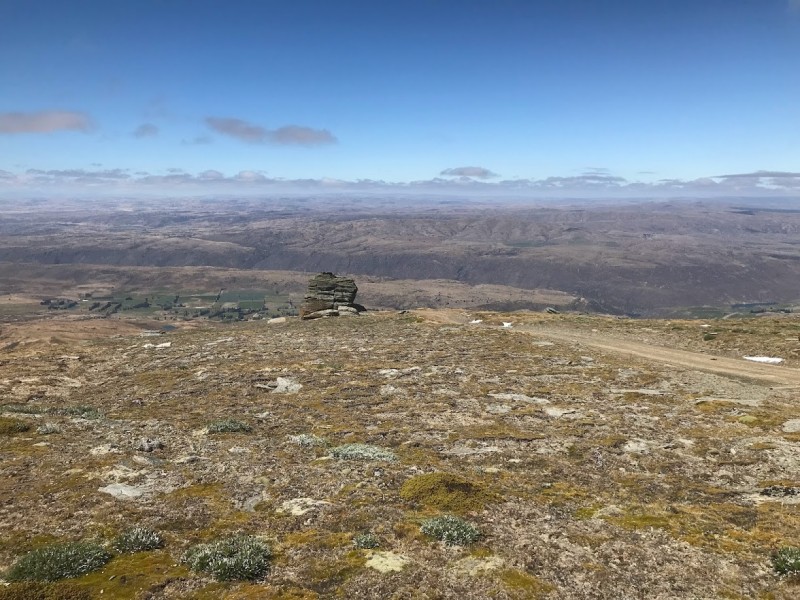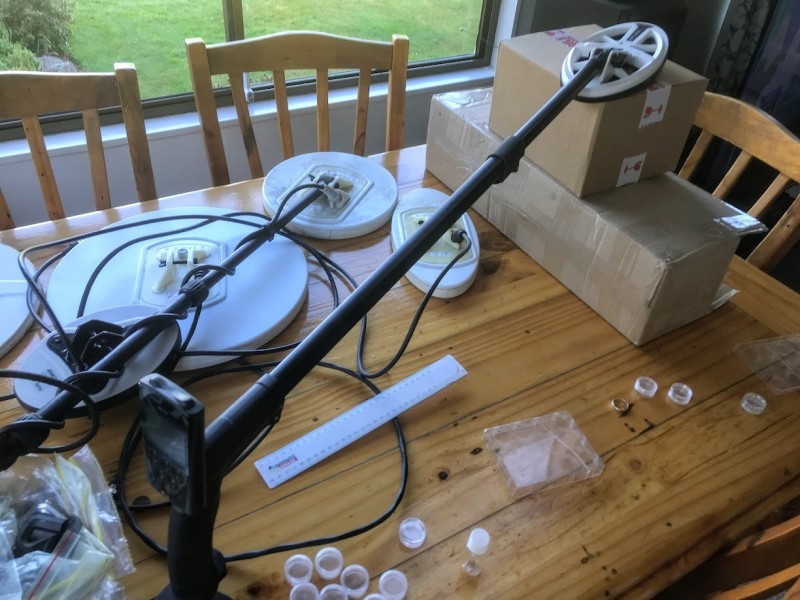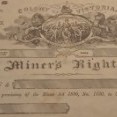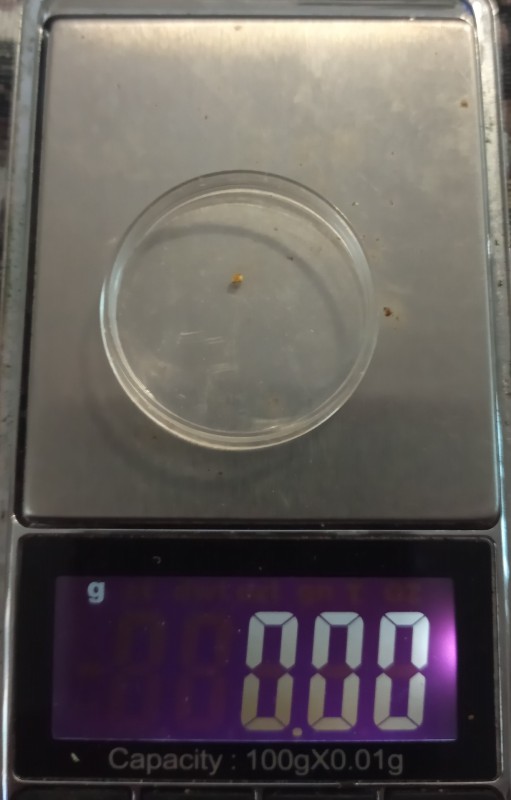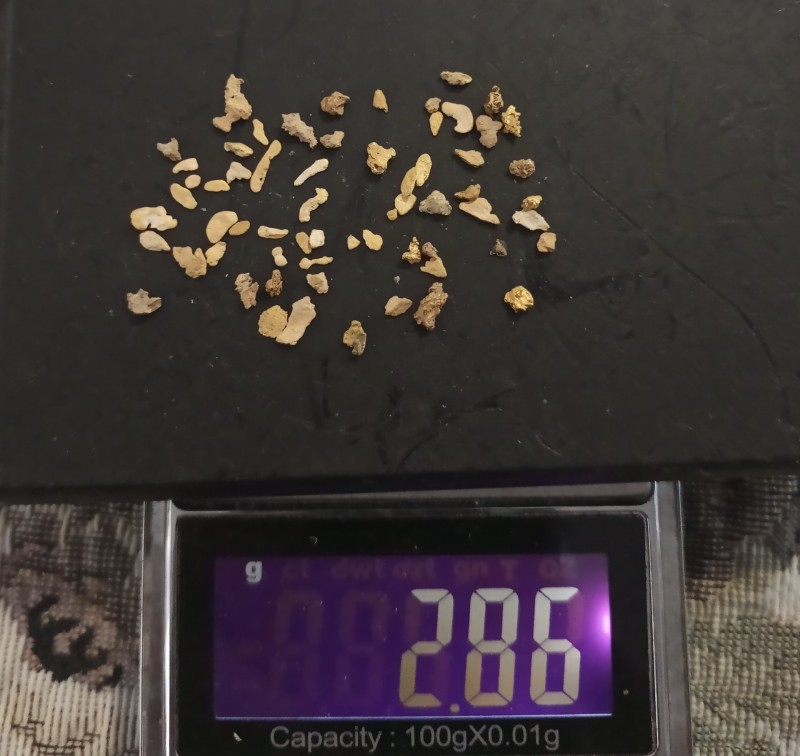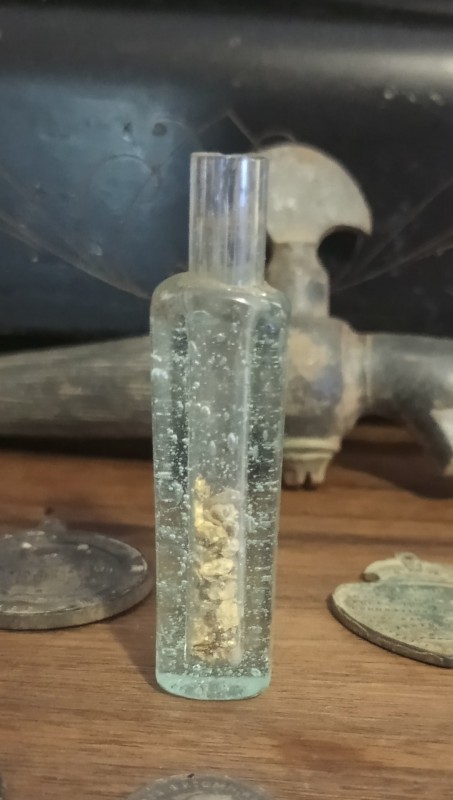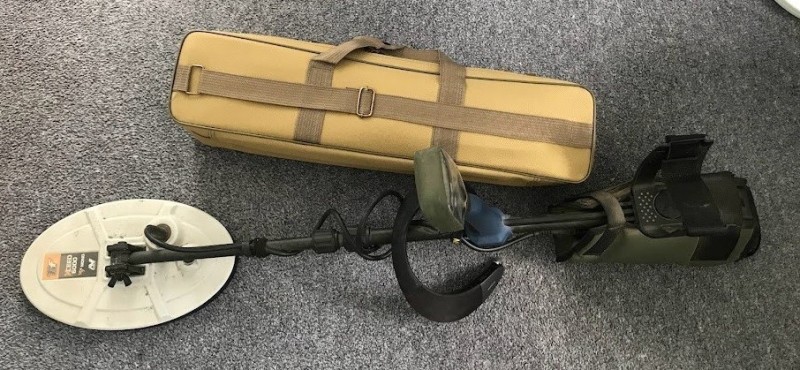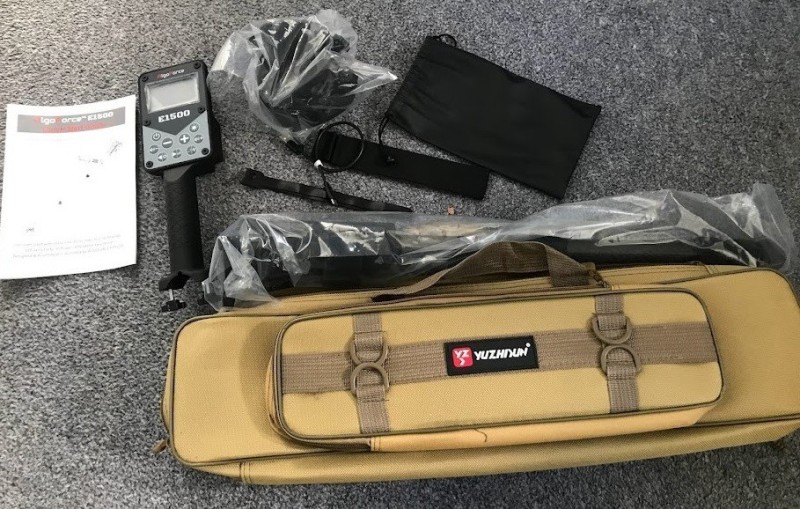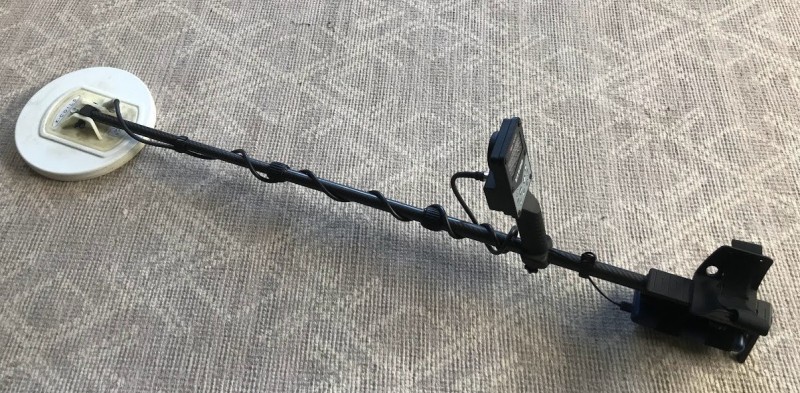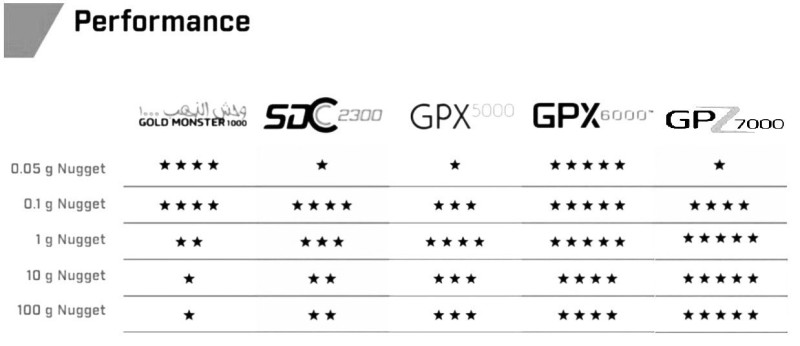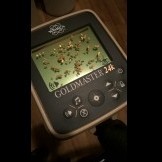Search the Community
Showing results for 'GPZ 7000 ferrite'.
-
What’s all the excitement about a $1500 PI when my beloved GPX-6000 does just fine on tiny gold. My recently acquired (used) GPZ-7000 easily puts my back into traction bars while I swing a boat anchor and dig beyond the depths of modern man with a handheld pick, to get the rarest of gold, a 1/2 ounce nugget. Why do I say rarest of gold. Because the majority of folks in the US who put a 2nd mortgage on their house to purchase a GPZ-7000.. has yet to find that half ounce nugget. Now I’m taking pain pills to manage the beating from the ZED’s capabilities and lack of ergonomics… as well as from the old lady who seen the credit card bill. We know this new AlgoForce E1500 is not going to perform any better than what many of us here on DP already swing. Or do we??? Who wants tiny bits, specimens and reef gold anyway? Do those kinds of Au even classify as gold and register to those around us? Most folks only know what a solid gold nugget looks like, right? Show them anything else and they just role their eyes and wonder why you spent $4000, $5000, even $6500 or the crazy few (more than I realized who would), spent $8000 and up to $10K. Which begs me to wonder again and out loud this time so I can hear myself. What am I missing? Well, I’m the odd duck here in the crowd most of the time anyway. I pretty much speak my mind and offend a few when doing so. When it comes to using a metal detector, I seem to be a lone wolf in my style and desire to swing. I say that because I swing many states, and pursue a variety of treasures. I do like to specialize in gold though and since I enjoy the hunt and travel, I make the time to reach far places while trying to collect a variety of gold occurrences. I’m not the norm, for that is a sure thing. I like collecting all gold that can be found with a metal detector. And…I seem to find my share of gold, a great deal of the others miss. Is it because they are lacking knowledge or skill and possibly both. I’m not sure? I do know that my finds have increased substantially since I learned the importance of how different kinds of gold responds to detectors and their technologies. One of the things that immediately caught my attention about this new detector being released, was mentioned by our friend Nenad. On 1/25/2024 at 11:51 PM, PhaseTech said: If you want to find small gold as well as specimens and reefy gold, then the AlgoForce E1500 is worth a look. I’m licking my chops and counting the eggs (golden eggs) my roster is going to provide me. How about you.
-

Pi Question - Coils Power On & Off
Steve Herschbach replied to DSMITH's topic in Detector Prospector Forum
I would never worry about powering up a control box without a coil attached. On the other extreme, I would never under any circumstances want to connect or disconnect a coil on a GPZ 7000 if it was powered up, but due to the way you have to half disassemble the detector to do this it is unlikely anyone would. On the other Minelabs Carl is probably right but it is also something I would never do. We are creatures of habit, and developing a habit of being sure a detector of any sort is not powered up when connecting or disconnecting a coil will never cause you grief. You can't say the same the other way around so do please just look at it as good practice. And again... From the GPX 5000 and earlier manuals: “Always ensure that the control box is turned off before connecting or disconnecting the coil to avoid damage to the detector's electronics” -
Some Things To Take Note Of With The Algoforce
phrunt replied to phrunt's topic in AlgoForce Metal Detectors
The ideal people to buy an Algoforce are those with an earlier model GPX, a 4500 or 5000, or any of the earlier models, it will completement those detectors so very well, they can share coils and the Algo provides a lot of attributes they lack, the lighter design would be a big plus too with the tiny little light batteries. It would give them better small gold sensitivity, and from what I've seen so far hits the difficult bits of gold the GPX models (except 6000) miss or are very weak on. I wish they didn't call the 6000 a GPX, it's frustrating as it's not even remotely a GPX model. Earlier GPX users will greatly benefit from its EMI handling too, they can use mono's when normally they'd need an AI coil, or if lucky a DD may work OK. QED owners, it's a no brainer, perfect upgrade. As I've never used a TDI I can't comment much, but it might be something they would be interested in too with its features, coil compatibility and performance along with the attractive price. SDC owners I have no idea, never used one. The next set of buyers would be those that don't already have a 6000 or 7000, someone looking to buy a PI, but not sure they want to spend Minelab pricing, they'll get a great detector with far less outlay. They could also use it for other purposes, I think it's going to end up a pretty damn good dry and wet sand beach detector, and will be a very good way to use a PI for coin and jewellery hunting anywhere with it's great Target ID's and EMI handling. GPZ owners may like it for a lighter patch hunter, it's yet to be seen how it would perform in this situation, and the Aussies will soon report on that no doubt, it may even outdo the GPZ with stock coils or official aftermarket coils on some small gold, and seeing the 12" round is the officially smallest coil for the GPZ without modifications then the Algo brings those people small coil support for a detector that doesn't cost too much more than some aftermarket 7000 coils and the Sadie to pair with it is a pretty cheap little coil too. It's most certainly its own detector and has features and benefits that no other PI has, such as its incredibly stable Target ID's, which put most VLF's to shame from what I've seen so far. I'll be interested how people doing all sorts of different things with detectors are able to adapt the Algo to their detecting style and the benefits it brings them. -
Some Things To Take Note Of With The Algoforce
phrunt replied to phrunt's topic in AlgoForce Metal Detectors
You're correct, I didn't find any gold, I was going over ground I'd done before with the 7000 and 15" CC and 8" X-coils along with the 6000 and 10x5" Coiltek, and even the Equinox 800, it was an area I'd found one of my biggest nuggets along with a few small bits so I really wanted to just check out how it performed on the same ground doing the same things, and if it did find anything I'd missed, The area has quite bad hot rocks too, yet I never found one, the E1500 went over them like they didn't exist. It was just nice to experiment with it and hit the heavy junk area trying to take advantage of the Target ID to experiment. JW was with me and he was smart for someone trying to find gold, he went to the spot I found a nugget right as his 6000 coil died the last time we were there so that area hadn't been as detected and we knew nuggets were likely hiding there, he found 3 little bits with his 6000 and Coiltek 10x5" in the time we were there, which was only a few hours. I could have done the same sort of thing but just wanted to experiment more, learning the detector. It won't easily perform miracles finding gold where the others have already done, I never expected it would but wanted to try experiment more with the Target ID feature and just see how it behaved in various situations. We ended up spending a big part of the day not even detecting, driving exploring gold producing areas I'd never been to before, largely as I was too worried to try take on the 4x4 track up the mountainside, it's a challenging drive, even the drive back down the various gates along the way had all been bent and buckled by being crashed into by vehicles with their breaks failing so it was good to have someone experienced with me to take on that drive for my first time, I got stuck once where even in 4x4 mode my tyres just skidded but he advised how how to get through that ? I'm not an experienced off road driver. I learnt plenty and saw a whole lot of new detectable ground that I could experiment with in the future, a little more confident to take on the drive myself now, in the right weather as long as there has been no rain for quite a while as I would get stuck ? It was nice to get out of the mid summer heat and go cool off in some snow too. There is a town down there, can barely see it. This is Jw that found the 3 bits of gold with his 6000 and 10x5" in the thyme bushes. My 10" round would have struggled in that area anyway, I'd have to put on the Sadie. -

Some Things To Take Note Of With The Algoforce
Steve Herschbach replied to phrunt's topic in AlgoForce Metal Detectors
Nobody ever said it was a miracle machine so this is a classic straw man presentation. This whole idea of this needing to outperform the GPX 6000 and GPZ 7000 at one third the price or less was brought up before, and I flat out said no, just go use the GPX 6000 and be happy. Same still applies here. If that is what anyone is looking for then look elsewhere. -

Why Is A $1500 Pi Even Being Talked About?
Steve Herschbach replied to Gerry in Idaho's topic in AlgoForce Metal Detectors
It’s also true that diminishing returns is a real thing. Spending ever more money for ever less gold is not sustainable forever. I did this for profit and made good money at it up until the release of the 7000 and for several years after. Yes, the 6000 kept the number count up, but the weight dropped off dramatically. I finally shut the doors a couple years ago on my small gold mining company business license after turning steady profits since 1979. I simply could not reliably cover expenses anymore, let alone turn a decent profit. The fact is the glory days are over but few want to admit it. I officially entered the ranks of hobbyist detectorist and still enjoy getting out and having a bit of fun looking for gold, but I’m far less motivated now than I was when I was getting 1/4 oz a day minimum. It’s been a couple years since I got more than an ounce in a day, something I used to do regularly. -
Today I took the Algoforce to a gold area, the first thing I did was put it under some powerlines in the gold area and see how well it would do, the 6000 is very ratty under and even some distance from these lines, the 7000's also a little unstable but more usable at higher sensitivity than the 6000, the reason this is important to me is I've found good gold around these exact lines, biggest bit was .7 of a gram only a few meters from where this video was filmed with the GPZ and 8" X-coil. So being able to run nicely around these lines is a big plus. So, rather than my word, here is a video This was my first target under the lines, unfortunately just a little bit of wire, but a demonstration of how it works under them with a target. I will do a post about the rest of the day also; this was just my first target as I entered the area I was going to be detecting and like every new coil or detector I wanted to test it under these power lines as these ones run straight through a gold area. I'm sure if you went back through some previous posts, you'll see the 6000 here, and the 7000. Again, I haven't watched these videos back yet I only just got home, I have no idea if its windy, or if there are any other disturbances, I like to do raw video, not editing out bits and pieces. I like people to see exactly what I see. By the way I found gold, so hopefully I'm the first E1500 paying customer to find gold with it!! that'd be cool.
-
Very good insights Jeff, Simon and Andrew... The Force 1500 may not be the best PI in the world... but it can be the best PI Detector in terms of Price / Performance.. In my opinion, there are more people who would like to buy a powerful PI detector, but they are always deterred by the high price of such PI detectors, which are 3000 to 7000 dollars/euros... - Here the PI Force1500 with a price range of 1500-1800 dollars appears as a detector that is already affordable for them.. because it is that in the prices of powerful VLF detectors /Manticore or Deus 2/... I myself once bought a second-hand PI Garrett ATX for 1300 euros, so it was an affordable investment in a powerful PI detector.
-
Hey Jeff, looks like you did well price-wise on the Axiom. The Axiom retails here in Australia at $7,385 or on sale at $7,185 which is not only way overpriced, but unfair that Garrett charges international buyers such a premium. It's the same for coils - so at $3kUSD you got a fantastic bargain! Also, there is a growing amount of us that are having endless problems with the Axioms not to mention faulty coils. I went out and got another Minelab GPZ 7000 yesterday as the Axiom has been nothing short of disappointing for the last 6 months, and useless for 90% of your prospecting day. We have collectively sent back our detectors "again" to Garrett Australia for testing. I personally wont ever use it again. The GPX 6000's are known for poor EMI shielding, but aftermarket modifications to fix the shielding and earthing removes those issues from the 6000. Also, more after market coils for the 6000 have been released and keep coming. Minelab applied a conductive coating to the inside of the GPX 6000 box but "forgot" to earth it back to the PCB properly amongst other things. One thing for sure, the Minelab range really is without competition. They were built and designed by people who live and breath gold prospecting, especially in the Australian environment. My plan is to strip back the 7000 and Frankenstein it into a lighter body and lighter battery. My research says it can be done, especially running the lighter X-coils....If the Axiom worked anywhere near as good as my wife's GPX 6000, I'd probably would never had got another GPZ 7000 - but they are such a good detector, you can't loose!
-

Why Is A $1500 Pi Even Being Talked About?
Gerry in Idaho replied to Gerry in Idaho's topic in AlgoForce Metal Detectors
Rob, That's where you and I totally differ. I like sharing and mentioning the kinds of gold most folks miss and the older Minelab PI's, including the GPX-4500/5000's miss as well. Heck no, I'm not going to pay $2500 for old technology to find the few rare solid nuggets out there at the locations we all hunt. You like mentioning the fact that specimens, wire gold and hardrock ore laced with gold is not the norm and or is rare. Buddy, I hate to tell you, but the majority of gold I recover anymore is of those styles and it's more weight than when I was getting a few ounces a year with the older PI's. Plus as a bonus, many of them are worth more than the actual gold, sometimes 1.5 to 3X the price, especially if it's wire gold. That's what I have been trying to tell folks for the last few years. The newer technology PI's (Axiom, 6000) are doing better on the specimens, reef, wire, tiny bits. That's exactly why I highlighted Nenads comments on the AlgoForce. I didn't bring it up at 1st, he did. I just so happen to know the importance of such potential detector. And no, its not just in Idaho that I'm finding them. Some of my collection is from CA, AZ, NV, WY, MT, OR, and Idaho. It's out there, but it takes people to change their mindset and go hunt hardrock ore dumps and hand placer workings. Why do I say that, because for 30 yrs most of us have been swinging old school PI's and missing those kinds of gold. When I can go behind one of my experienced customers on a site he gridded both ways...who pulls 11 ounces of gold with his GPZ-7000 and I found 3 more ounces with newer detectors, it really opens his eyes. One of the pieces is golf ball size and has near an ounce of gold. His 7000 would not hear it, even in air. That's what I'm trying to say. The newer technologies are seeing more gold than the old. Problem is the old gold (solid nuggets) has mostly already been found at the sites we hunt. I know you don't care about "what if gold", so when/if you decide to sell the AlgoForce, are you going to sell it based on price only? I love what Nenad said about the different kinds of gold....as I know there is plenty more of it out there to be collected. It's not as rare as you seem to think. I hate to say it..but in fact. I'm sorry you don't get out and explore more gold bearing regions. I also realize selling detectors is not your main income, it's kind of a side hustle. Hopefully (it can't be too far away), you'll have more time to play and venture into the invisible to many PI's gold. It's a lot of fun and very rewarding. I do commend you for your time and comments though. And I still enjoy BSing with you and Dawn on the rare times we get to. No hard feelings either way and who knows, maybe I'll have egg on my face. It wouldn't be the 1st time, only time will tell. -
Why Is A $1500 Pi Even Being Talked About?
DSMITH replied to Gerry in Idaho's topic in AlgoForce Metal Detectors
For me personally, it came down to, do I purchase a GPX6000 or pick up a Axiom the cost was the ultimate decision maker for me, I weighed the factors of ok am I going to find enough small nuggets to justify the expense difference between an Axiom or 6000, and I am not bragging but I could have purchased any PI I wanted including the GPZ 7000, most or a lot do not have that luxury of being able to purchase the most expensive out there, I weighed all my options that was available at the time and went with the sensible answer at the time, sure the PI I went with does not say Mine Lab on the side of it, but ultimately I went with the Sensible route and most realistic route I could have taken at the time, and that was the Axiom, I do like the Axiom, but I will tell anyone that ask me had the AlgoForce E 1500 been out at the time, that is the route I would have taken, because of the cost of the E1500. I will be purchasing one of the E1500s when they become available in the U.S not because I need it, but simply because I want one, do I expect it to do anything that the Axiom cannot do (Nope), one of the reasons I went with the Axiom was because at the time I was under the impression there would be after market coils produced, I do not see this happening with the entrance of this new detector the E1500, personally for me, I like having coil options and that is the appealing part for me is the amount of coils that is already available for the E1500, again I like the Axiom but those blunt nosed coils I really do not care for. -
Why Is A $1500 Pi Even Being Talked About?
phrunt replied to Gerry in Idaho's topic in AlgoForce Metal Detectors
I think the people that can't afford a GPX 6000 or 7000 are going to end up with a pretty good detector for their money with the Algoforce, and they will be able to pick up gold they would miss with the 4500/5000 that's a fact but it likely goes the other way too with the legacy GPX picking up gold the Algo misses, maybe deeper bits might be more the GPX territory, I'm not sure on depths yet on bigger stuff. I doubt they'll do better in any way than someone with a 6000 or 7000 although I've not used my 14x13" on the 7000 since I first got it so I really have no idea about the stock coils small gold performance anymore so maybe a 7000 owner would benefit from having it, they certainly would if they have old GPX coils laying around like a Sadie that gives them a point of difference by being able to get the coil into places the big old 14x13" can't get into and with the detector costing not all that much more than another coil for the GPZ it's not a bad option for a GPZ owner. QED owners are in for a treat, they already have coils, they already have a battery bank and likely a LL transmitter, so all they need is the basic package and they're off, a working ground grab detector with better performance than the QED from what I've seen so far. This morning I've been tinkering as I do, and trying out various coils on the Algo, seeing which ones need calibrated and which don't and doing some basic air testing, the smaller coils all work inside the house fine, even at 22 out of 30 sensitivity, putting the bigger coils on like the 15" cause too much EMI and it needs wound back to about 15 sensitivity but then depth and sensitivity suffers. They Deus 1 is also a good detector for indoor air testing with its 74kHz frequency not being affected by my house EMI so I've used it for some comparisons on a little collection of small gold, I've been able to run my Deus 1 at 95 on the sensitivity with no issues so virtually maxed out, and I must say the Algo is performing well against the VLF on these nuggets in air tests, very similar in fact, with the Algo handling bad ground better one would expect it to outperform the VLF at least on the small test nuggets I've been using, they're the same ones I used the other day swinging the coil over them at the river in the little plastic containers. I wanted to check something with the 6000 so went and got it, turned it on and tried lowering the sensitivity to the lowest possible and noise cancelling and was unable to use it at all, just going nuts so I guess that's a bit of a demonstration of how well the Algo handles EMI compared to the 6000 when both running mono's. Unfortunately coin depth I can't really check as with the bigger coils the EMI's too much of a problem indoors and the larger gold modes allow more EMI in than the fine gold modes. The bottom cardboard box under the XP coil is the one the Algo came in, pretty small box ? The next box up is the Sadies box. I just dusted off the Manticore and in Gold mode with all defaults and 25 sensitivity out of 30 using the M8 coil I get 8cm on a little test nugget (flake), the same nugget the Algo is getting 10cm on also on 25 out of 30 sensitivity with the 10" Spiral X-coil. -

Why Is A $1500 Pi Even Being Talked About?
Rob Allison replied to Gerry in Idaho's topic in AlgoForce Metal Detectors
Hi Gerry, I think it goes back to what most can afford. Everyone would love to own a GPX 6000 or even a GPZ 7000, but most know there are other priorities for most that come before a super, high end detector. I get calls all the time about how someone would love to own a GPZ, but the wife would leave them. Historically, the GPX 4500 and 5000 were the best sellers, more so after they were both discounted down to $2499 and $3995.00. I still today get inquiries on them, but both long discontinued here in the US. Keep in mind also, the GPX can really probably find about 85% off all the gold that is out there today. There will always be nuggets that are too small, crystalline, too deep ,,,,, and the list goes on and on .... If most would just focus on what they can find, rather than what they might be missing! I could "what if" all the time. The big advantage I see with the AlgoForce 1500 is the price and all the aftermarket coils you can use with it. I think if Minelab continued to carry and support the GPX 4500 @ $2499, we wouldn't probably be having these discussions today. Just my thoughts, -

First Gold Nugget Finds With The AlgoForce E1500
Luis replied to phrunt's topic in AlgoForce Metal Detectors
a lightweight detector helps to do those things. I doubt you would have done it with the 7000?. I'm glad you're okay Simon. -
Nugget Finder Z-search 3 Different Version Coils?
Nedkelly replied to Gerry in Idaho's topic in Detector Prospector Forum
I can't thank you enough JP , recently bought a 18 month old 7000 and been playing around with it. Next time I go out I'll be using your settings, ferrite balance technique and try a manual emi noise cancel. ?- 37 replies
-
- minelab gpx
- minelab gpz 7000
-
(and 1 more)
Tagged with:
-
I hold the 7000 in air with left elbow balanced on the top of the arm rest strap, holding the handle with my left hand with the coil held flat in air relative to the ground (folded flat against the shaft), then with my right hand I quickly side to side wave the ferrite on a stick over one receive point UNDER the coil (both receives are fine too) to excite the X balance (Ferrite calibration) with the unit in Semi-Auto and Quick-Trak button held in. (I usually wave a bit before triggering QT to listen to how much ferrite signal there is first). Sometimes it pays to release QT and trigger it again a few times to excite the tracker and force the process. When you use this in air method the G balance will be out as it’s balancing to nothing (X and G are both balanced out at the same time when QT is triggered) so once QT is released I bring the coil to the ground and gently pump up and down and will even sweep side to side then up and down to allow the Semi-Auto GB to get the ground balance (G balance) back to accurate. Sometimes if the GB is way out the tracker will lock because of the loud ground signal (called pausing effect, you need this to prevent tracking out a good target at depth), so I’ll just place the coil on the ground and leave it motionless for a few seconds to allow the tracker to unlock, then resume pumping, repeating this till you hear the tracker kick back in and balance out the ground signal. At no stage after this process do I EVER trigger Quick-Trak unless the Ferrite is present. If you want to be particular and OCD like me you can lift the coil in air again after the ground balance is correct and check the ferrite in air without pressing QT to double confirm there is no Ferrite signal. BTW it is OK to have a small amount of Ferrite signal as the ground signal will always be stronger than a tiny bit of residual Ferrite signal. The timings that require the most attention are High Yield Difficult and High Yield Normal especially if you have the Gain up a fair way. The key thing is to get rid of any loud signal coming off the ferrite, if there are loud signals the G balance will try to compensate for them and your ground balance will be inaccurate. I don’t ever use AUTO because if there are conductive signals present (all gold fields have them) or saturation signals (Australia usually has both together, especially after rain events) then the tracker can’t tell them from X signals and will come up with bad numbers, the poor old G tracker will take the brunt of the assault and try and compensate ending up with a lot of false signals and an unhappy user. When using Semi-Auto, the ferrite calibration is linked to the detectors electronics and more particularly the temperature of the electronics. So in winter for instance the detector will be at ambient temperature at the start of the day, from start up it will be dead cold gradually warming to over 45 degrees internally, so the calibration at the start of the session will slowly move away from optimum to operating temperature but the Ferrite balance is locked in Semi-Auto mode once QT is released, so I recommend to check the ferrite calibration after an hour. In warmer weather it hardly changes (minimums of say 18 degrees C to over 40’s), but I check it anyway because I’m OCD as heck about it. ? The key is to have no signal off the ferrite. X balance is tied in with the temperature of the electronics, the X balance calibration is locked if Semi-Auto is used. If X is correct (no signal off the Ferrite relative to the electronics temp) then it doesn’t matter how bad the ground is for X no X signal will be heard unless it is extreme like a high X hot rock (magnetic hot rock). Any X signal that is seen by the machine (incorrect X balance for example) can mask or hide a good target signal at depth. X signals get blended in with general detector behaviour and are very hard to isolate, it’s just an extra layer of noise that does not need to be there. The Ferrite represents X, the one Minelab supply is a specific type, so not just any ferrite works. The reason I use the above in-air method and not just putting the ferrite on the ground is because I work in mostly high X and more particularly high Saturation environments. If the ground has high saturation (where the Tx is affected by highly magnetic surface particles) the saturation signal can be boosted/magnified up through the centre of the ferrite more than double the distance from the ground where the saturation would normally be heard, this can trick the X tracker to some extent but also give the impression the X tracker isn’t working in the Semi-Auto mode. In such cases no amount of ferrite balancing will get rid of the signal as it is a magnified saturation signal you are hearing not the Ferrite, this magnified saturation signal prevents you from getting the coil right onto the ferrite for best calibration practices. Such scenarios can be very confusing and damage confidence. So for peace of mind I just do it in air to get the best calibration possible. NOTE: You can place the ferrite on a large rock away from saturation signals if you have no stick or left the stick at the car. The key here is being informed, knowledge is power. Once you know what something is, then you’re empowered to do something about it or ignore it. That is the mantra of all my training sessions, informing and empowering. Hope this helps JP
- 37 replies
-
- 6
-

-

-
- minelab gpx
- minelab gpz 7000
-
(and 1 more)
Tagged with:
-
Hi. No rubbishing attempt here. Im serious. Been detecting since blahh blahh blahhh, found bigger than blahh, blahh, blahhh. Im the blahh...ahh forget it. Im none of that. I'm happy anything. Was gonna do this as a reply in another thread. So. I can right now find this stuff easy with a Highly strung VLF. Not every day. But is expected. The new Algo. How does it do on this stuff. Algo said VLF sens in a PI. Hope i got that right. Because I got countless places that the stuff in the following pics is there. Some found with a GPX5000, gone, and the rest with VLF. Doesn't weigh. Too small. Count, im tired trying, 60 All in the tiny opium bottle. May take full 7g!? I really want to hear from users, putting it up against the claim of VLF sens in a PI. On various forums its vs 7000, 6000, 5000, 4500, ........ People are doing that but I have seen zero vs the claim VLF sens in a PI. There are a squilion VLF users out there like me now. Show us and im in, in a blink.
-
Some may find this interesting, a tear-down of a GPZ 7000.
-
My Algoforce arrived a couple of hours ago, I had a quick refresher flick through the Quick start guide that came in the box and had a play around, to my surprise I could use it inside my house on default sensitivity and it was quite stable, I was able to test some coins on it for target ID and mess around learning the menu navigation. It's a puzzle at first as you need to remember the irons purposes, most icons are a giveaway as to what they do and the screen even tells you which ones to press on certain screens. So far first impressions on usability is for a detector with settings like this, it's very easy to use. I was able to configure my 10" X-coil on it in no time without the need for the instructions. It quickly calibrates to coils, a couple of seconds if that and you can store their size in there so you can easily go back to them, it comes pre-configured with a few common coils. It comes with this cool bag to lug it around in, I shouldn't say lug it around as it weighs nothing, it's super light and makes the 6000 feel heavy. The 6000 in the picture is shrunken down a bit for storage but was put there for a bit of a size reference. This is the contents of the package. All very professionally made, the look and feel is a long way different to the more homemade feel of the QED, a similar priced PI machine. And it all assembled with the 10" X-coil on it and configured. It's really easy to assemble, It takes a bit of getting used to the coil connector, it's different that's for sure, I'm sure if someone didn't like it they could put a GPX 5000 one into the shaft as I'm pretty sure you can buy the part but it worked fine and once, I knew what I was doing it did the trick, it doesn't use coil rubbers, a different design entirely but it does work and is probably perfectly fine, I'm just not used to it and with X-coils have very solid ears they don't flex out to fit it between them, at first I didn't think it fit the X-coils but I worked out if you slide them in from the back they fit, trying to get them in from the top of the ears is impossible. Maybe X-coils need to adjust their coils for an extra millimetre or two of width on the ears to make it an easier fit. I'll discuss this with them as they are resuming production of their GPX coils due to this detector hitting the market. Now, I filmed some video, it is very raw, my usual style of no editing and what you see is what you get, in the video you're seeing what I saw the first time doing it, I'd not even tested the nuggets I went over prior to filming. I'd just checked a couple to ensure it even worked ? I'd used the detector for about 10 minutes at home in total before filming the video so be gentle, I'm just learning it. I will say for a fact it's more sensitive to small gold than the GPX 5000, some of these nuggets I used in the video the 5000 can't hit on at all. It's also more sensitive than the QED by a significant margin. I tested on a $1 coin, and had the target ID then I went into my yard where a couple of $1 coins are buried, and it was able to ID them very well, with a stable ID, I was quite surprised by this and I have to go back out with a VLF and double check it all and get some video. This is all very early days, but I'm certainly happy with it, it handles EMI so well for a PI , better than anything I've used before, and I think even for someone that just has a GPX 4500/5000 it would be a big compliment to it being more sensitive and picking up the gold the 5000 misses due to it being porous or just generally weak on, and for anyone not wanting to pay the crazy Minelab pricing for a 6000 or 7000 it's a bargain. On lead shotgun pellets it's similar to the 6000, neither will hit the #9 pellet but as the sizes increase both are the same with the pellets they will detect. I've not checked depths or anything yet just ability to hit them comes in at the same size pellet. I have so much to experiment on it yet, but happy with it for sure. The videos currently still processing by Youtube to HD but the SD version looks available now. I haven't even watched the video myself, this is raw as it gets.
-
Well, as someone in low mineral ground often looking for tiny gold, I can lay down a few points that matter. Without a doubt a higher frequency VLF like the Garrett 24k, Gold Bug 2, Equinox, Manticore, Legend, the list goes on and on will hit smaller gold, much smaller gold, and get more depth on these very tiny bits too, however once the bits creep up in size to the .1 of a gram bit and more (we will use it as a generic example cut off not a definite guaranteed cut off) then even with little minerals the PI takes over for depth, then as the gold gets bigger again say fox example 1 gram, the VLF with something like an 11" coil starts to gain some ground again but the PI's and ZVT will always be deeper. I used to use a VLF all the time for prospecting, even though I had a GPX 4500 sitting there, why? It found more tiny bits often, I had more chance of getting gold. I was convinced to put more effort into my PI and I found when I did, I lost the tiny bits entirely so found less in number of pieces and went home with nothing a lot more but the slightly bigger bits started to appear a bit deeper down so my gold weight increased. Then the GPZ and small coils came along to my stable, it was a lot more sensitive to the small stuff than the 4500 and felt more like a combination of the VLF and PI, I was getting a lot more gold and never felt the need for the VLF anymore, the bits the VLF got the GPZ didn't were very small, the 0.02 of a gram and smaller, I then purchased a 6000, found it very similar to the GPZ on small gold performance mainly as I am fortunate to have small coils for my GPZ but I always felt the GPZ was going much deeper. It's really hard to prove this sort of thing, it's not like I'm going to walk around with both detectors, it's more when using one you notice depth on targets more than using the other and some basic air testing in a way verifies it for me at least, if it's not seeing it sitting on the ground with the coil swinging above it it's sure not seeing it in the ground is my theory. The Algoforce now comes along, again it appears to hit similar size bits as the 6000 and 7000, I think it has a little less depth on them, but still hitting them well. The VLF's I put all of these detectors in competition with on small gold are the 19kHz range, not the higher frequency machines. Detectors like the Gold Bug Pro, think of the smallest bits it will hit, that's more in line with the best of the best in the PI and ZVT tiny target performance. That's not talking about depth, it's talking about the smallest gold they will hit, depth varies but often the PI's and GPZ will exceed the VLF depth too, so many variables. I think the cut off point for PI and GPZ on tiny gold is about 0.03 of a gram, anything below that you need a VLF. Minelab did this chart for the 6000's release, indicating it was better on a 0.05g nugget than the GM 1000, and they ranked the GPZ so low, but that's their fault for not releasing coils for it. I scoffed at this as no way in the world is the 6000 more sensitive to 0.05 than a GM, but in the right hot soil, maybe it is, certainly not my soil.
-

First Gold Nugget Finds With The AlgoForce E1500
Steve Herschbach replied to phrunt's topic in AlgoForce Metal Detectors
Thanks for risking life and limb for us Simon! This all reminds me of the Axiom in a way. There was no reason to tell people who already own a 6000 they needed an Axiom. There is also no real reason why anyone with a 6000 needs a E1500. It’s for people who don’t have a 6000 and who don’t want to spend that kind of money. I can also see it for the person who has a 7000 and would like a second detector that is much lighter, can use smaller coils, and which overall costs less than some 7000 coils by themselves! But except for very odd situations like with maybe certain hot rock or EMI locations I just don’t see this detector outclassing the 6000 in outright gold detection. 6000 owners can pretty much just go on about their business and ignore all this, unless of course they are the sorts that just have to have another new toy to play with. There are a few of us like that. -
If there is any detector that will find a significant amount of gold at Rye Patch then the price is relatively unimportant to someone like me. I want to go out and find gold. I bought a $1500 X-coil so that I could do that with the 7000 and I think it is money well spent. We are at the end of the gold in places like Rye Patch and I still haven't found a chevron. I've found missed pieces in our local areas when I get out. Some guys who get out often are still finding a few nuggets here and there. We've got some patches down here that had a 'lot' of little gold 4-5 years ago but it's gone now. We can't find any with the VLFs, the 7000s, 2300s and the GPXs. If an AlgoForce can find some there it won't be because of its price. It will be because it has the right stuff. No doubt it could have found a lot of the gold found by previous detectors and we can prove that by using some of that gold as test nuggets in those patches. I'm with Gerry. This detector just seems to have some different features and some new PI views. Now, how can dealers make a buck? Gerry will provide training with his experts. Just my thought when you buy something as a direct sale to consumer.
-
Same for me, I often have a ratio of 30:1 shotgun pellets to gold using the 6000. Plenty of un-detected deep gold around, its just that we don't have any new detectors capable of hearing it. I am soon getting a legacy Minelab PI (maybe SD2200D) and modding it for use with big coils. Beats a 7000 by a noticeable margin so should be interesting....
-
Hi Gerry, thanks for the kind words. I too was on the fence when it came to seemingly oversimplifying a detector but the sales and facts speak for themselves. The GM 1000 was an all time best seller for Minelab and still is selling well. The GPX 6000 is also extremely popular and gaining more and more popularity every day as the COVID and other release gremlin’s get ironed out and people learn to trust what it can do and appreciate the benefits. I don’t say these things lightly. The 6000 does not require huge experience to be used effectively, it is simple enough that a pretty inexperienced user can go find some gold even in the harshest ground types. Too many controls can bamboozle even an experienced operator because so much of metal detecting has to do with your mind. You introduce too many variables and it kills confidence, that your settings are wrong or someone is not telling you the “secret” combination. I used the proto Axiom in some pretty bad ground and I tried all the various settings combinations to try and get some advantage out of the “features” and I found myself just coming back to the same settings over and over again. The biggest advantage I found in the short time I used them was getting the threshold pitch and threshold correct on edge of detection gold. Probably the most confusing thing about the 6000 is pairing the bluetooth and accidentally pressing the soils button and then trying to use Normal timings in Hot ground. Those two are the biggest newby mistakes. I agree about the shaft being round but it honestly doesn’t worry me, I have my lower rod super tight and never undo it day to day and only ever shorten the mid shaft when I pack up and head to another location. Getting back on topic, using the GPZ 7000 and Nugget Finder Zsearch 12 combo I rarely change my settings from one day to the next (a little like the 6000). I actually change my sensitivity all the time on the 6000 dependent on ground whereas the 7000 is pretty much set and forget. Threshold 27 Theshold Pitch 40 Sensitivity 12 Audio Smoothing OFF Ground Balance Semi-Auto Ground Smoothing OFF Timings High Yield Ground Type Difficult I go out day after day after day using those exact same settings, the only thing I do from one session to another is check for EMI and do a manual Noise Cancel if necessary, then perform a Ferrite Balance under the coil IN-AIR in Semi Auto mode using Quick-Trak (I have my ferrite taped on a stick) and then pump the coil over the ground with no Quick-Trak then get detecting. That’s how I train people as well. Obviously in soils that can handle Normal you can go from one to the other, but from a newbie POV it is better to stick to Difficult till they learn the basics and develop some muscle memory (coil control, eye, hand, hearing symmetry). JP
- 37 replies
-
- 11
-

-

-
- minelab gpx
- minelab gpz 7000
-
(and 1 more)
Tagged with:
-
Yea, I didn't ground balance, at this stage I was just playing with it learning how to use it, it had no ground response so I just left it. I've since balanced and it doesn't affect Target ID's. The ground is so mild there it never makes a difference, VLF's don't even need balanced. The hot rocks are the only issue. I've not tested on iron junk yet, first I have to find some, easier said than done. There are nails in ground in my yard so I'll mess around there a bit with ID's today, I've decided it's too hot to go anywhere today so I'll marinate in the spa pool a lot to ride it out, I'll skip a couple of days before going anywhere until it cools down, it's a public holiday today and with the heatwave the beaches will be full of people, so I'll wait until they're all back at work. I'll probably go to the river and do some detecting with it, recovering targets after IDing them and see what they turn out to be. I also want to see how well it compares to the 5000 on a coin depth using the same coil, as a bit of a depth reference. I'm not sure about Pellet ID's yet, I'll have to test if they differ much from small gold, I doubt it. As for those expecting it to excel over the 6000 or 7000 as a gold detector, keep in mind it's price, it excels for its price, it's very good, and from what I've so far not very far behind the 6000 with overall small gold sensitivity and that's just trying one coil on it, albeit a very sensitive coil, but there are smaller coils than 10". I think it's punching well above its weight. If all I owned right now was a GPX 5000, I'd be hanging it up and using the Algoforce the most, keeping in mind NZ mostly has small gold so it would give me more finds than the 5000 does. I don't know yet bigger target depths that is why I want to start checking out some coin depths in the ground and see what happens. Hopefully it has a bit of depth in normal on 1 gram size bits, if it can hold its own there it may end up a really good patch finder as it's so stupidly light and nice to swing, when I was first assembling it, the weight reminded me of the XP Deus, it's just so light.



